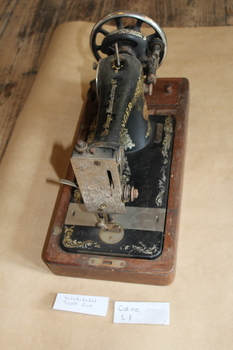Historical information
In May 1931 the Australian government announced a 20% reduction in expenditure, cuts to wages and pensions, and increased taxation. Despite workers striking, wages were reduced and working hours increased. The economy plunged into depression. Workers blamed the hardships on greedy bankers and the rich elite.
The unemployed’ home-made, designed, knitted, painted and created things like pegs, pincushions, soaps, kitchen utensils and Pokerwork art, to sell door-to-door or in the streets.
‘Make Do and Mend’ was the mantra of the time.
Making and mending clothing at home became a means to save money and an income offering services mending, altering or making clothes for the working people. Making over garments had been a time-honoured tradition since pioneer days. During the Depression clothes were a luxury and new fashions were created by altering old clothes. A best dress became a housedress, a church suit became a mine suit. Old shirts became new aprons, old trousers became new hats.
Magazines and newspapers published Instructions on making and mending clothing and these became curriculums for sewing classes. Darning, mending, patching, saving fabric for rags, patches or upcycling became a necessity. Having a Sewing machine like this 1927 Singer housed in Oliver Gilpin’s store at Coal Creek Community Park and Museum could be the difference between survival and starvation
The popularity of publications such as ‘Make do and mend’ lasted through the Second World War and into the 20th Century.
Physical description
Hand operated Singer sewing machine with wooden cover, circa 1927
Inscriptions & markings
Y4476618








